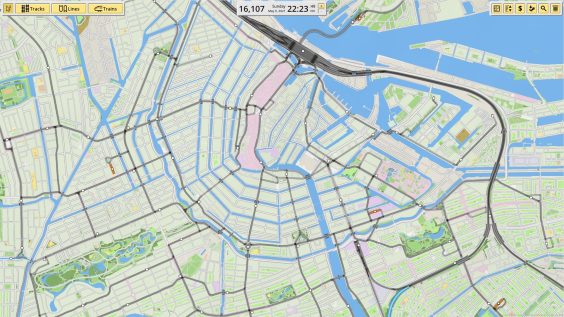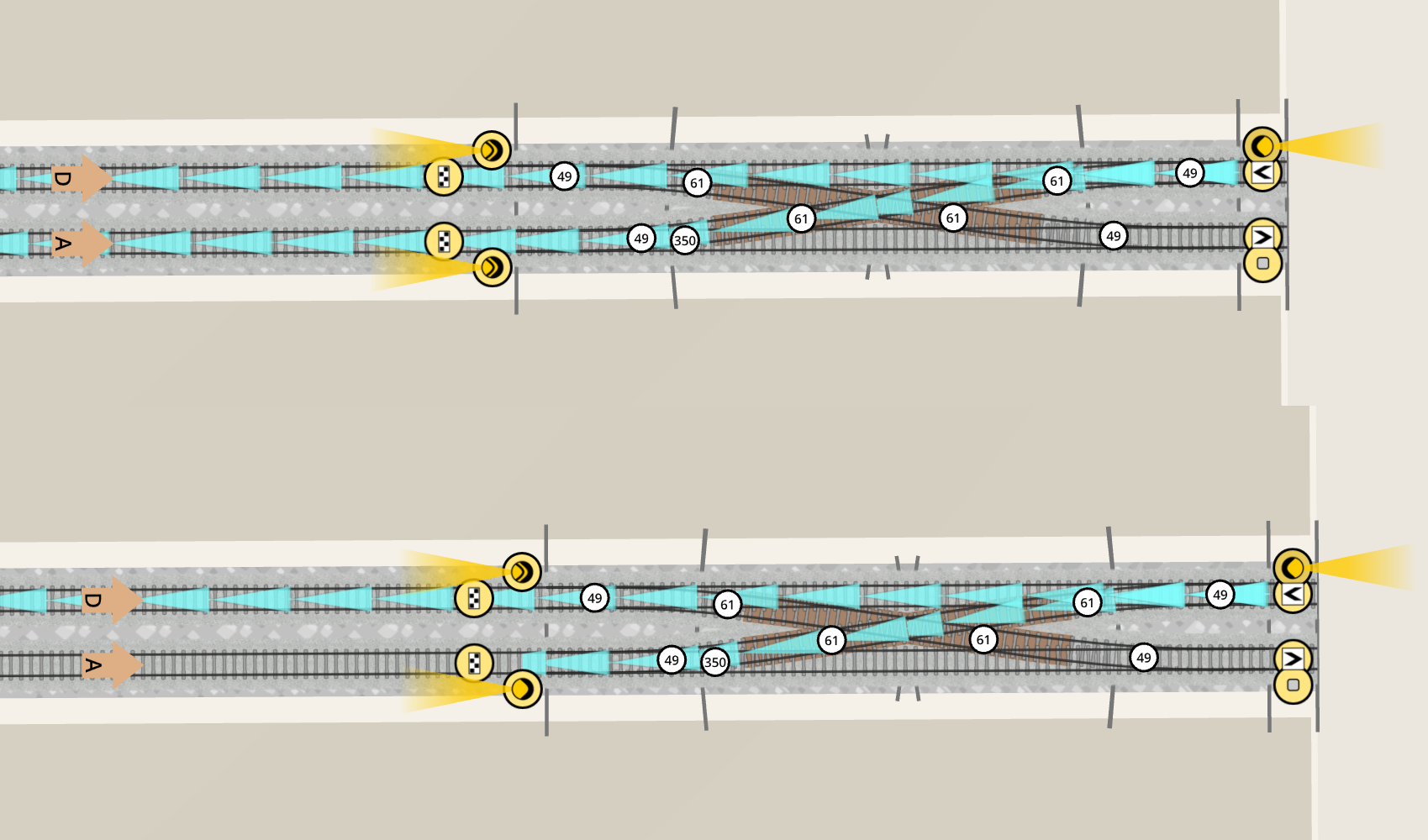
What and Why?
Path Signals were recently introduced to NIMBY Rails as a recent update to the beta branch. You need to move over to the branch, or wait for 1.2 to roll on to main for this guide to make sense to you.
There are three main types of signals recently introduced to NIMBY Rails as of 1.2.9: Simple Block; Block Balise; and Path Signal.
There’s another fantastic guide available for how to use the first two of these signals (in addition to One Way and Station Stop objects, which are self-explanatory) https://steamcommunity.com/sharedfiles/filedetails/?id=2506196200
This guide will give you basic covering for Path Signals, what they mean, and why they’re needed.
The old way
Pre Beta 1.2.9, the best way to signal points was to place two Simple Block signals to the entrance to the split, and then another Simple Block signal to end every other point. You’d have to determine which route was your more popular route, and then place a Block Balise signal between the two main paths of this line.

Simple branch junction with old signal system.
As we can see, the blue line visible travels across the lower horizontal line, and the Block Balise signal stops any train on this section of track interfering with the upper horizontal line. However, imagine if a train came from the bottom up to the upper horizontal line, and another train was also on the upper horizontal line, both travelling right? Who would have the right of way? Would the signals make a train stop? Keep in mind that trains cannot stop at Block Balise signals!
That’s right! Both trains would collide with each other, because the Block Balise signal stops the signals from talking to each other, informing them of trains being on the track. In fact, to the far right is a station. If a train is in that station waiting for pax or any other reason, and another train comes up to the back of it, as long as that train clears the Block Balise signal the bottom track going into the station will not tell trains to stop! This is bad.
The new way, with Path Signals!
The new way to signal this junction is by using Path Signals. A few are needed, and if you’ve placed one and looked at the options it might be confusing. Using the same junction as before, let’s tidy it up and put Path Signals in where they should be.

Simple junction with the new Path Signal blocks.
As we can see, we’ve one less signal, and three new signals with orange lights. These are our Path Signals and I’ve selected the right-most one to demonstrate how it works. Note we’ve also got rid of the Block Balise signal separating both paths.
To start with, there is an additional option with Path Signals over Simple Block signals, which is the Limits Path: option. This has two settings: Always and Only for same direction. From here I’ll let Weird and Wry explain:
“Limit path” only affects “incoming” paths that want to pass by the signal, not the paths traced from the signal itself. See this example using the stock station layout:

Example of Limit Path functionality.
In both cases the selected signal is the path signal to enter the station. In the first image, the lower platform signal is set to “only same direction”, the default value for this stock layout. Since the path traced from the selected signal is not coming from the same direction as the signal, it is not blocked. In the second image, it has been changed to “always”. The same path tracing attempt is now blocked, even tho it’s attempting to go past the signal from behind.
Perhaps an easier way to understand it, is you can use Path Signals to terminate the path of another signal at that point, meaning the path that a particular signal looks through won’t effect the state of a signal when it’s occupied. A good rule of thumb is to think of your signal as preventing trains from passing it if a train is inside one of its paths based on where the train wants to go.
For the image above: on the upper station a train entering the station is stopped if another train is on Platform A or D, whereas on the lower station the train is not stopped from entering platform A, regardless if a train is in that block or not.
But, what about those other signals‽
I hear you cry?
The two Path Signals to the left of the above image are set to ‘Limit Path: Always’. This means that if the block that the path occupies intersects with a block that a train is in, the signal will turn red when a train approaches this Path Signal.
It reads more complex than it is. Picture this: Train A is travelling into the station from the West, going East. The station is already occupied by a train filling with pax. Train A can travel forwards and wait patiently at the signal before the station. Train B has just approached, joining the queue to the station, coming from the SouthWest. Because of the Path Signals utilised, the SouthWest Path Signal will disallow trains from entering the junction, because its path is occupied by Train A. However, a train leaving the station and travelling West can do so! The SouthWest Line is not occupied by Train B!
This might be an easier example:

Simple ‘get on the right path’ points with Path Signals.
The above image should explain a little better. The train on the Left has just departed the station and is taking this Path Signalled junction to get on the upper line to continue East, yet there’s a train waiting at their Path Signal (which is now red, not amber), until the path that signal controls is clear. Note that the Path Signal set to ‘Limit Path Always’ on the upper line of the station is also required, it will be red as this train is moving onto that path, preventing any trains from departing the station and colliding with the train taking its path to the upper line. However it will also be green when the train on the right proceeds into the station, because its path is clear. A regular Simple Block signal will work, but will be red when technically the path is clear, because the block it controls also extends to the lower line. See below for how not to signal this type of point.

How not to signal this point.
Fin.
Hope this helps understanding simple junctions. Don’t forget that complex junctions are just lots of simple junctions chained together.
As a general rule of thumb: Use Path Signals for every entrance to a branch/point/junction. Where the lines split into different directions, set that Path Signal’s Limit Path to ‘Only for same direction’, with every other Signal that doesn’t split being set to ‘Always’. For the exit to junctions, use Simple Block signals, or Block Balise if you really want to.
Feel free to leave comments and advise on guide formatting and flow, and improvements to help you understand. When I get to signalling my bigger interchanges I’ll show them here to demonstrate.
Here we come to an end for NIMBY Rails Path Signals and Points hope you enjoy it. If you think we forget something to include or we should make an update to the post let us know via comment, and we will fix it asap! Thanks and have a great day!


Leave a Reply